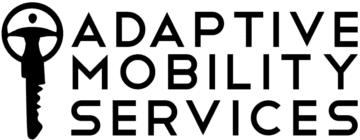OT Strategies: Documenting & Billing Driving In Generalist Practice
 Question: How do you bill and document pre-driving interventions?
Question: How do you bill and document pre-driving interventions?
Here’s my response on documentation & a few thoughts on billing as well:
Documentation
If we are truly viewing clients through a holistic lens, we should consistently address driving and community mobility as an integral component of an occupational therapy plan of care and include evidence of this practice within OT documentation. For your plan of care:
- Think about the performance skills needed to perform the task
- Determine your method for measurement
- Select an activity that is within the scope of practice for OT
- Provide interventions to achieve the desired outcome.
Documentation should also reflect skilled terminology and top of license practice:
- Assessments should identify underlying deficits of all ADL and IADL performance, such as financial management, health management, home management, including driving and community mobility. Use standardized assessments, where available and appropriate.
- Goals and selected interventions should support performance skills necessary for a safe and effective return to driving, though should only address pre-driving skills; they should not address in vehicle assessment or on-the-road driving.
- Utilize skilled terminology to document the interventions provided and relate their use to support a return to driving.
Ensure you are documenting baseline scores and performance using objective measures, provide quality examples to demonstrate the unique value of OT intervention to support this client, integrate assessments and objective measures into goals, included skilled terminology, and ensure services reflect top of license practice.
Remember, driving requires the integration of a range of performance skills. Use objective measures and assessment tools to measure each performance skill and then your OT clinical reasoning to recover, rehab, remediate and adapt deficits.
Example documentation:
“Referral initiated due to concerns regarding driving. Comprehensive OT evaluation identifies deficits in motor and cognition. OT interventions recommended to address activity tolerance, strength, & home exercise program; and to address caregiver strategies for promoting safety awareness, and strategies for managing alternative modes of transportation. Client recommended for a hold on driving and consultation initiated with DRS.”
Example documentation:
“Client is referred to therapy due to concerns regarding his driving. He was observed to have difficulty reversing from his parking space. During his OT evaluation, deficits related to vision, balance, and cognition were identified. Client has been recommended for a temporary hold on driving. Education and interventions to further review areas of concern, as well as, to problem solve appropriate alternative modes of transportation, implementation of scanning strategies for improved safety and decrease fall risk, and completion of home management tasks during hold on driving….”
Billing & Coding
Billing and coding for OT interventions will be based on the medical conditions being addressed and the activity/intervention being applied. For example, if activities reflect safety awareness during ADLs, billing may reflect ADL self-care.
Treatment diagnosis codes and billing codes should reflect the deficit performance skills being addressed in the plan of care.
For example, completing vision, sensation, motor, & cognitive testing helps to identify safety strategies for ADLS & IADLS, could potentially be billed as self-care/home management training. Providing education on a hold on driving with identification of alternative modes of transportation could reflect community mobility interventions. Development of compensatory cognitive skills to improve problem solving could reflect cognitive interventions. Assisting with wheelchair navigation and mobility on outside terrain could reflect wheelchair management.
Make sure to review the Local Coverage Determination (LCD) to see what services may be covered, as LCDs may vary across the country.
Interested in learning more? Consider one of our fabulous online courses. We offer a range of courses for the generalist looking to address driving in the clinic, to the OT looking for training to take the wheel. Learn more by visiting our OT education section.
Photo by rawpixel on Unsplash
Meet Susie!

Susie Touchinsky, OTR/L, SCDCM, CDRS, is an established expert in both occupational therapy and driver rehabilitation. She has been an OT for more than 20 years and brings expertise and a love for helping others in her speeches and trainings.
Learn More With Our OT Driver Rehabilitation Specialist Courses
Try Our Free OT DRS Courses:
- OTs Role With Driving
- GRID: Generalist Resource to Integrate Driving
- Readiness to Drive: IADL Checklist
- FREE 6 Driving Resources for the OT
- 5-Steps Our Clients Use to Start Their Own Highly-Paid OT Driver Rehab Business
- Driving Risk Screening Tools
- BCAT Brief Cognitive Assessment Test System Overview
- BCAT Part 2: CBS 8 & 15-for-Me
Become the best OT Driver Rehabilitation Specialist you can be by being a life long learner.
